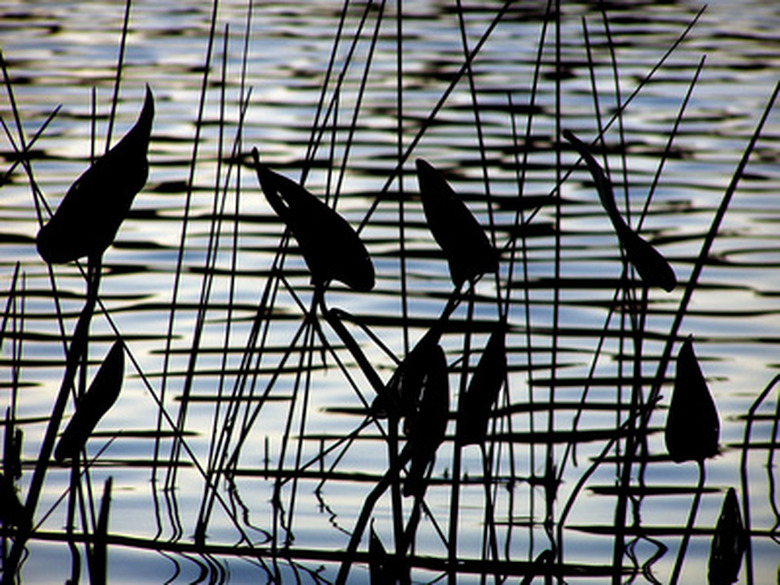What Plants Live In Rivers & Streams?
Plants that are native to North America, and some that are not, live in the rivers and streams across the continent. Some of these plants live on the borders in the shallows, while others can grow in deeper parts of the waterways. While some are of great benefit to the ecosystem, others can be detrimental if they are too abundant.
Plants that are native to North America, and some that are not, live in the rivers and streams across the continent. Some of these plants live on the borders in the shallows, while others can grow in deeper parts of the waterways. While some are of great benefit to the ecosystem, others can be detrimental if they are too abundant.
Pickerelweed
Pickerelweed is what the Missouri Botanical Garden website describes as a marginal plant, meaning it grows in the shallows of rivers and streams. Pickerelweed can grow to 4 feet high and it occurs throughout much of the Eastern United States. Pickerelweed produces tiny blue flowers on spikes, which rise over foliage shaped like arrows. Pickerelweed grows in colonies along the shore in water deep enough for fish to find shelter in it. The seeds are edible, as are the young greens, with insects such as damselflies using the plant lay their eggs on.
- Plants that are native to North America, and some that are not, live in the rivers and streams across the continent.
- Pickerelweed is what the Missouri Botanical Garden website describes as a marginal plant, meaning it grows in the shallows of rivers and streams.
Water Hyacinth
The Texas A&M University website notes that water hyacinth is non-native, coming from South America to occur in many waterways across many parts of the Deep South. Water hyacinth can cause problems in portions of rivers and streams with slow-moving currents. It is a free-floating species of plant, with no roots attached to the bottom; instead, the roots absorb nutrients right from the water. Although attractive, with a light blue flower, this plant can become so dense that it will reduce the oxygen content beneath it and clog rivers and streams, making fishing and other activities difficult. The "National Audubon Society Field Guide to Wildflowers" reports that water hyacinth does remove harmful toxins from polluted areas.
Arrowhead
Among the other names for arrowhead is duck potato, which refers to the large edible tubers that occur on the rhizomes that develop under the mud of this plants river and stream environs. The leaves have an obvious arrow form, with two lobes that project backwards from the larger forward-pointing main lobe. This aquatic plant develops in great numbers in the shallow edges of the water. Arrowhead can be as tall as 4 feet, with the plant noted for flowers that have just three white petals. Arrowhead tubers are a popular food of animals such as muskrats. People can also cook the tubers and eat them.
- The Texas A&M University website notes that water hyacinth is non-native, coming from South America to occur in many waterways across many parts of the Deep South.
- It is a free-floating species of plant, with no roots attached to the bottom; instead, the roots absorb nutrients right from the water.
Water Chestnut
Sluggish, shallow streams can support water chestnut, a plant that has leaves both above and below the surface. Water chestnut has triangular foliage that floats on the surface. The plants can develop stems as long as 16 feet. Water chestnut takes its name from the nuts the flowers produce, which ripen by August, sinking down into the bottom and remaining able to sprout new plants for more than 10 years. Boaters and swimmers consider this species a nuisance. This non-native species is not a major source of food for wildlife and it can prevent native plants from growing in rivers and streams.
References
- Missouri Botanical Gardens: Pontederia Cordata
- Texas A&M University: Water Hyacinth
- Missouri Botanical Garden: Sagittaria Latifolia
- "National Audubon Society Field Guide to Wildflowers"; John Thieret; 2008
